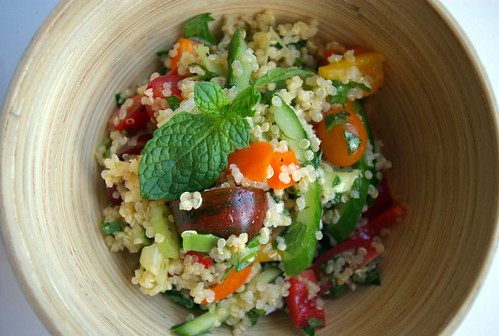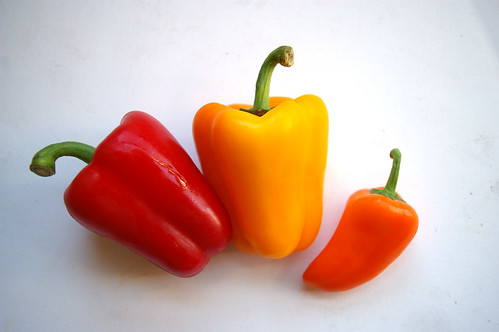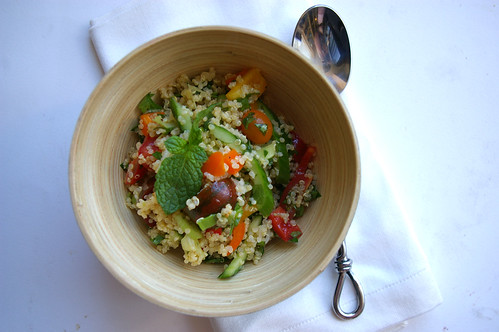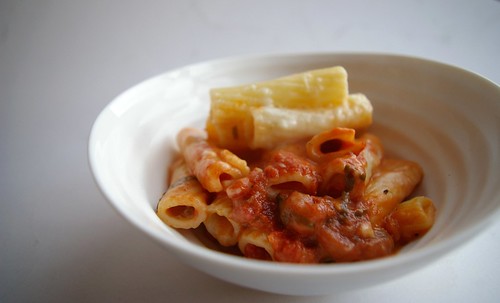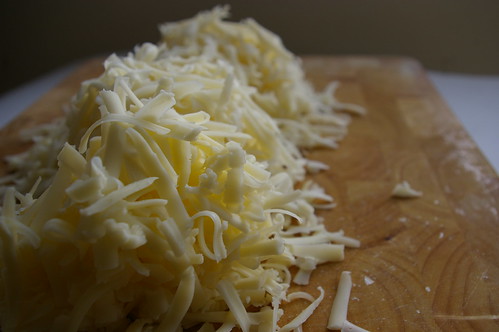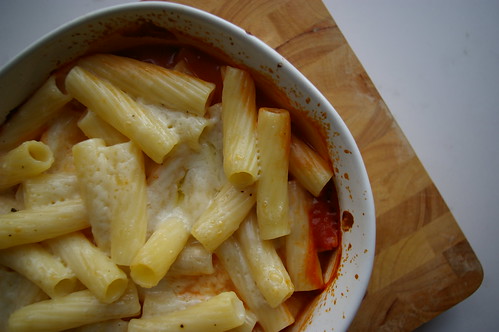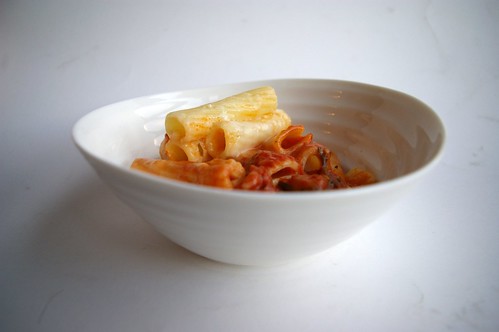Necessity is the mother of invention.
True in the world of technological advances. True also in the world of the kitchen.
Because, on those nights when there doesn’t appear to be anything in the cupboards and the fridge is down to just the basics, there are still meals to be made.
Such was the case the other night when I found myself hungry and with only the very basics in my cupboards and fridge. (Eclectic basics due to my bizarre impulse grocery shopping skills, but basics nevertheless.)
Among them, a can of diced tomatoes I’m sure I bought for a Bolognese that never ended up getting cooked, a chunk of Parmesan, part of a red onion, some rapidly wilting herbs and eggs.
In short, all the ingredients for a dish known as Eggs in Purgatory.
(It’s sometimes also known as Eggs in Hell, though I’d argue that’s for a spicier version than I can handle.)
There are millions of variations for this recipe, but they all start with the basic concept of cooking eggs in a tomato sauce. Beyond that, it can be as creative as one wants or dependent on what one has on hand: wilt in some greens like spinach or kale, add sausage, spicy chorizo or strips of prosciutto, sauté onions and garlic to give the sauce more flavour. Make a more “hellish” version by throwing in some chopped jalapenos or chilies while sautéing the onions. The options are limitless.
With my limited supplies, however, I kept it pretty basic. Thankfully, basic doesn’t mean boring.
With only 10 minutes and a very small amount of effort, I had a flavourful and filling dinner. The rich eggs with slightly runny yolks are a nice foil to the spicy tomato sauce. I mopped it all up with a crusty piece of bread slathered with some butter.
Using just one pan to make a meal means this dish is near perfection.
Next time, I probably won’t wait until necessity forces me to make this for dinner; I’ll make sure I have the ingredients for Eggs in Purgatory.
Eggs in Purgatory
For a spicier version, add more red pepper flakes or add some diced jalapeno. For some more green, wilt spinach or kale just as the onions have softened before adding the diced tomatoes.
- 1 tbsp (15 mL) olive oil
- 2 tbsp (30 mL) diced onion, about ¼ of a small onion
- 1 clove garlic, diced
- ¼ tsp (1 mL) red pepper flakes
- 1 13.5-oz (398 mL) can diced tomatoes
- ¼ tsp (1 mL) salt
- freshly ground pepper
- 2 eggs
- ¼ cup grated Parmesan
- ¼ cup chopped herbs
In a pan over medium heat, warm the oil and then add the onion, letting it sauté until softened and slightly transluscent. Add the garlic and red pepper flakes and sauté until fragrant, about a minute longer. Pour in the diced tomatoes and juice, stir and let come to a simmer. Add the salt and a few grinds from the pepper mill, then let the tomato sauce cook until the liquid reduces and the sauce thickens slightly. Taste for seasonings, adding more salt or pepper as needed.
Using the back of a spoon, make two divots in the sauce and crack the eggs into the spaces. Sprinkle the parmesan over the sauce and egg whites.
Cover with a lid and let the eggs cook until the whites are set and the yolk is slightly runny (or to your desired doneness).
Remove from the heat, then sprinkle with the chopped herbs.
Serve immediately.
Serves 1 to 2.



